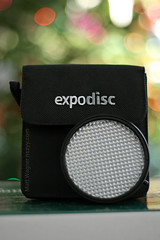A really good writer could probably tie these diverse topics together, but I’m going to instead present a few different thoughts that are only related in that they’re aboutthe President.
I initially laughed when I heard about the guy showing his shoe at President Bush. While I truly believe that we did a good thing getting rid of Saddam, I also truly believe that we’re doing nothing but endangering American lives while angering Iraq today. So I could understand where the Iraqi journalist was coming from: he probably wasn’t much more happy than if Hugo Chavez had come to “liberate” us from democracy.
But the more I dwelled on it, the more upset I was. While I think Bush is one of the worst presidents in history, he’s still my President. I’m all for protests and pickets, but assaulting my President isn’t cool.
I’ve been gaining a little more respect for Bush lately, too. I still think his eight years have been disasterous to America, but lately he’s done a few things right. After voters chose a candidate whose main qualification, some would argue, is not being Bush, he’s been surprisingly cordial in ensuring there’ll be a smooth and speedy transition.
I was skeptical of the auto bailout at first, but came to see it as something necessary. I’m still amazed at how incredibly inept American auto has been as a whole. I wouldn’t buy an American car anytime soon, because every American car my family has owned has been a junker, whereas every Japanese car we’ve owned has needed nothing but routine maintenance. Some of the Japanese cars out there get twice the gas mileage of the latest American hybrid, a gigantic SUV that gets 20 MPG. (A serious “wtf mates” is in order.) But Detroit is already in shambles, and a critical element of our nation’s economy. I think we learned our lesson after the $700 billion bailout, in that we can’t just give blank checks for billions of dollars to the private sector and expect a cure. But I think it’s also pretty apparent that American auto isn’t lying about being in a death spiral.
I tend to listen to talk radio on my way into work, since driving a lot has made me realize that most radio stations have about 10 songs they just loop over and over, and I’m tired of all of them. (This is music? It sounds like a guy drumming his fingers on a table shouting “Pop champagne” over and over.) And I work for a company whose site causes me to see lots and lots of far-right ranting. Between the two of them, I’ve realized that a lot of Republicans are convinced that, (a) The auto bailout is Socialism, (b) Obama is going to approve the bailout because he owes the unions, and (c) Obama is a Socialist.
I was even more appalled when Republicans struck down the bailout, citing the fact that American autoworkers hadn’t agreed to a big enough pay cut as their reason for opposition. But I was elated when President Bush signed the bill. The obvious reason is that I think it’s important for America to not let the whole of American auto collapse at this point in time. I haven’t read the bill to know if it calls for the things Obama had suggested, such as requiring American auto to make their compact sedans get gas mileage that’s no worse than my SUV, and assigning oversight to ensure that the companies can’t squander the money. I hope it does. But the other reason I’m elated that Bush signed the bill? Because he’s a conservative Republican. That really throws a wrench in the whole, “Hey, guys, let’s call Obama a Socialist for supporting the auto bailout!” tactic. Plus, it means that Obama and Bush agreed on something, which underscores one of the things that brought Obama into the national spotlight in 2004: there aren’t red states and blue states, but a United States. The two parties that should keep each other in check have become the bitter marriage where the only goal is to get in shots at the other side.
Thus far I have two criticisms of Obama. The first was his opposition to gay marriage. I think of gay marriage as something like interracial marriage, or female suffrage. It’s something that an awful lot of people have no reason to support, since it wouldn’t benefit them in any way. But we didn’t vote to extend what I think is a fundamental human right. We’ve been voting to strip away a right from a minority. Obama seems to be in a pretty terrible spot, because gays seem to hate him for not supporting gay marriage, yet the far-right seems to hate him for supporting gay marriage.
My second criticism of Obama is that he’s been assembling a pretty Democratic Cabinet. This is to be expected, really, since most Presidents have appointed Cabinets of people who agree with them. But one thing that really excites me about Obama is that he’s not afraid to reach out to the other side to understand where they’re coming from and to work with them to get better things done. So although it’d be unusual, I’d hoped Obama’s Cabinet would be a bit purple.
Those two thoughts combine, though, into a comment about Rick Warren, the conservative pastor Obama’s asked to the inauguration. Even though I don’t like the notion of a conservative preacher who’s espoused bigoted views having any place in Obama’s administration, I’m also really pleased to see that the Inauguration isn’t going to be chock-full of far-left figures.
At this time in history, I think we really, really need a President who’s going to ignore political parties and allegiences, in favor of actually moving us forward.


